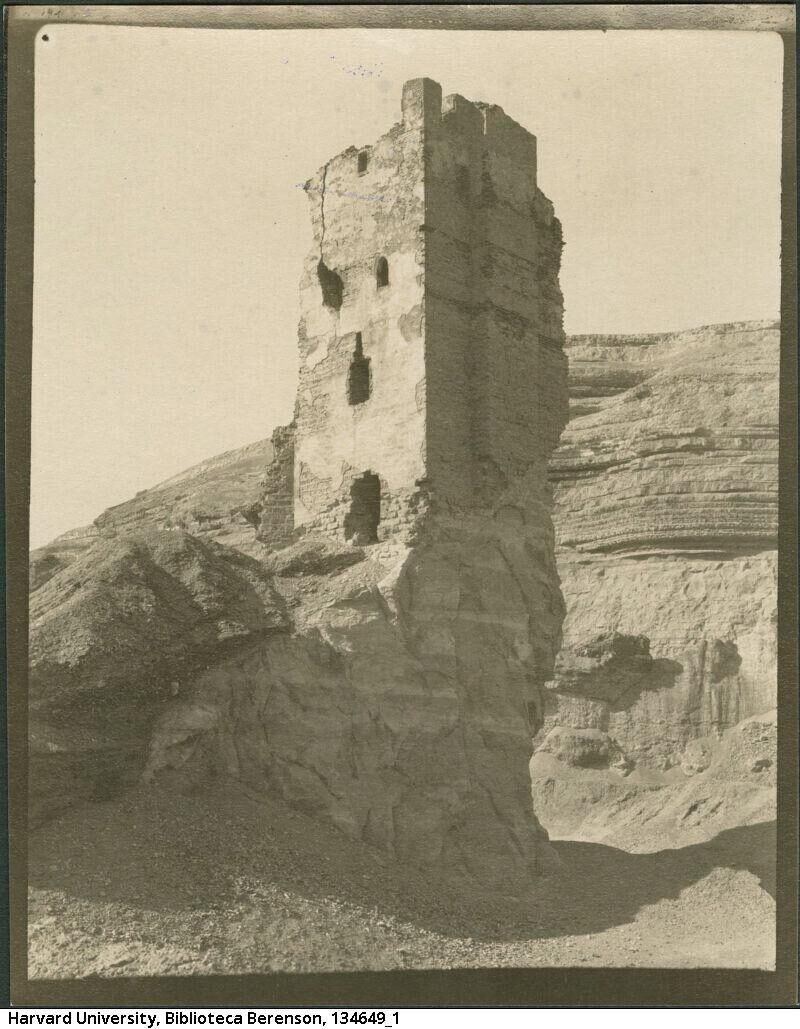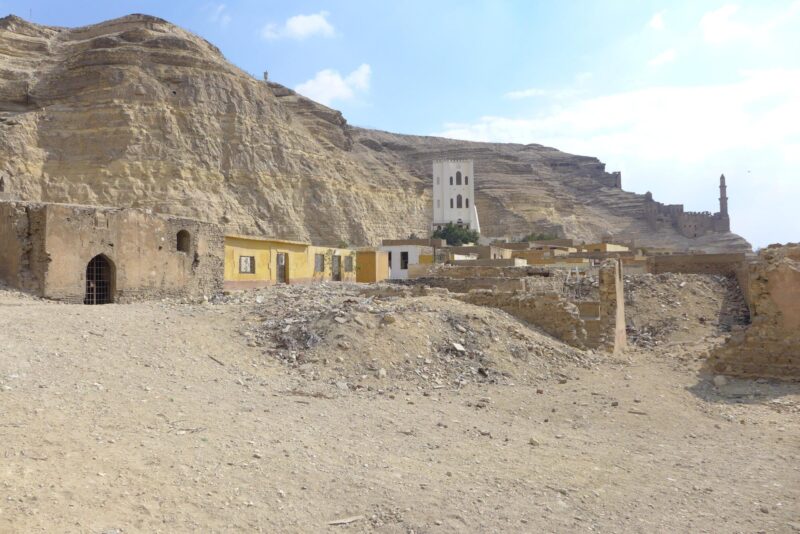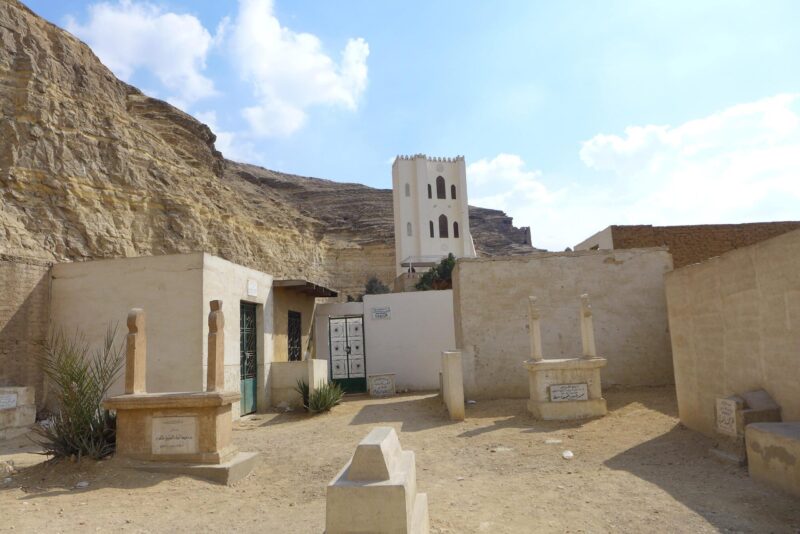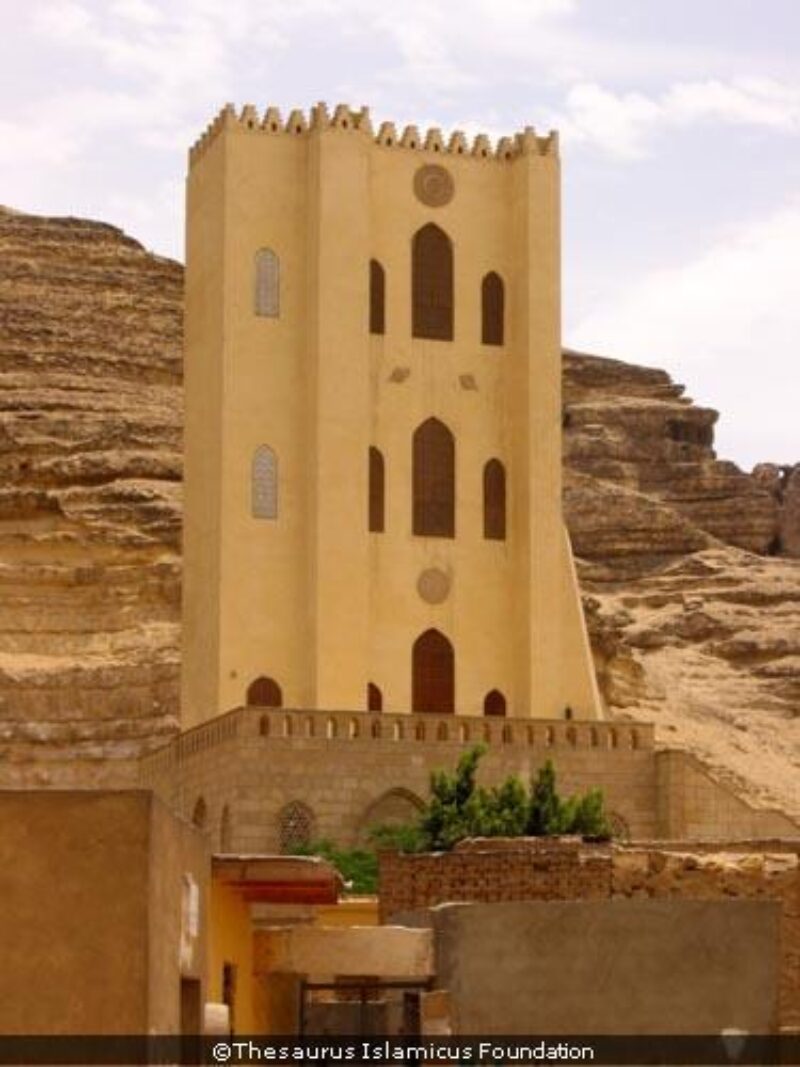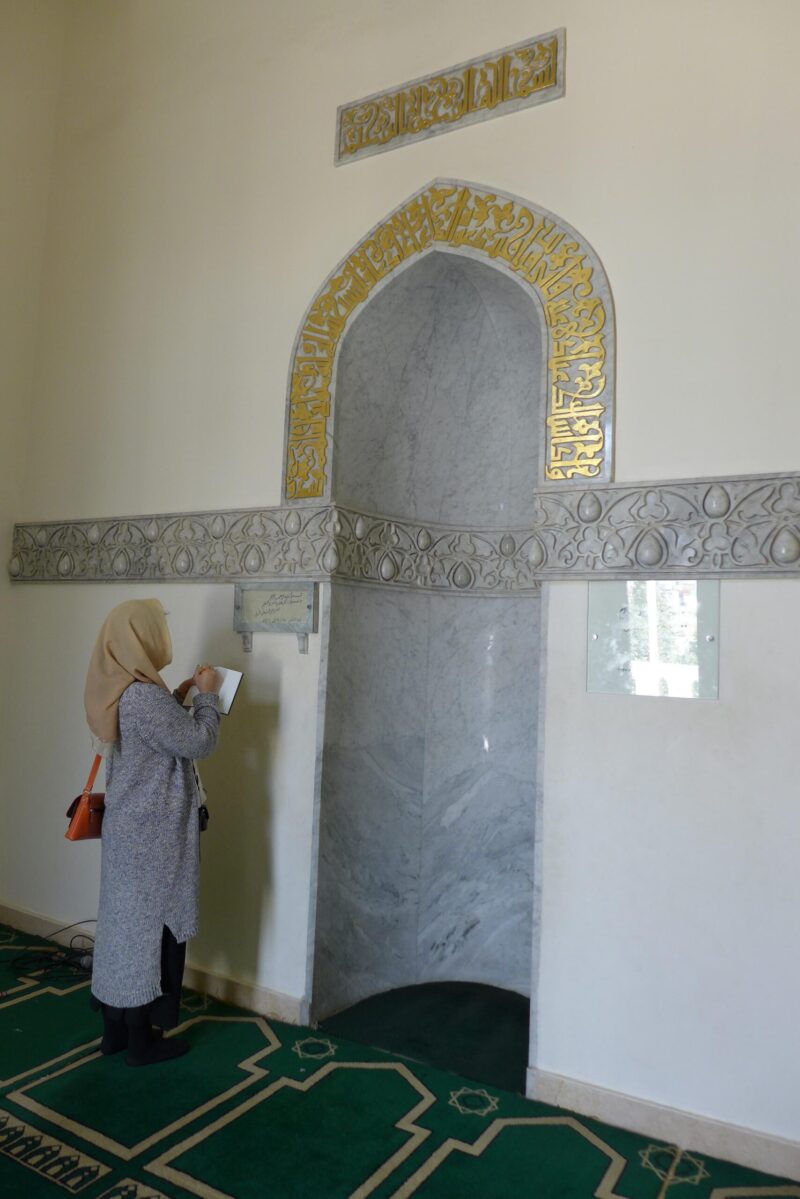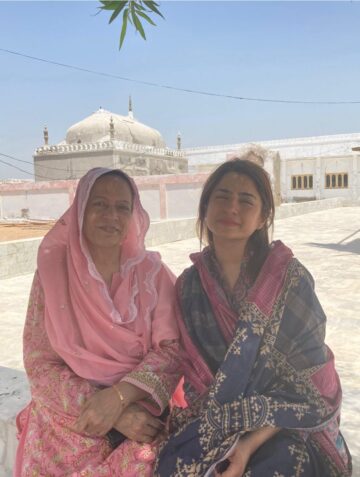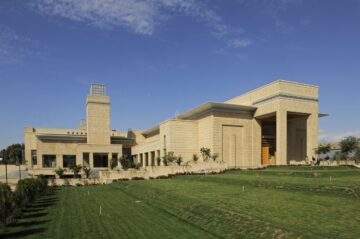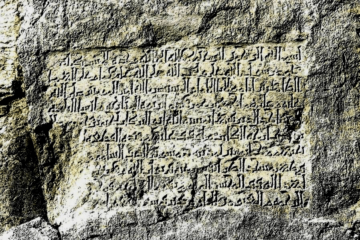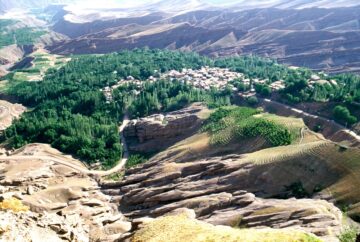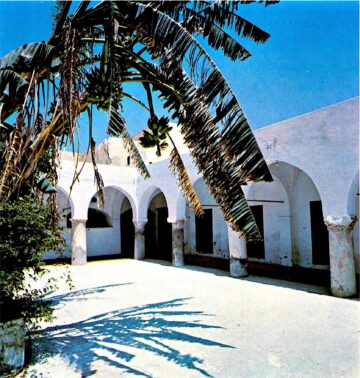Al-Luʾluʾa (The Pearl) Mosque is a small mosque located on Muqattam Hill. It was constructed between 1015-1016 during the reign of the sixth Fatimid caliphIn Arabic khalīfa, the head of the Muslim community. See caliphate. and 16th Ismaili Imam, Abu ʿAli al-Mansur al-Hakim bi-Amr Allah (r. 996-1021).
Rectangular in plan, Al-Luʾluʾa mosque was originally built in the shape of a tower with three levels. The ground floor of the building was constructed by carving into the rock of Muqattam Hill and was barrel-vaulted. The back wall featured a simple mihrab, and the entrance had a facade with three arches.
The second floor was also barrel-vaulted, had a decorated mihrab, and was illuminated by a rectangular window. The top floor was split into two rooms, each likely with a single window for light.
The mosque’s arches were made of brick and stone, and the interior walls were probably plastered. The ground-floor walls were built of limestone blocks with a rubble core.
In 1919, Al-Luʾluʾa Mosque suffered damage to its facade and vaults which led to their collapse. However, the mosque has since been reconstructed by the Dawoodi BohraIndian community of Mustaʿli Ismailis, now found primarily in the Indo-Pakistan subcontinent, Yemen, Egypt and other parts of the world. IsmailisAdherents of a branch of Shi’i Islam that considers Ismail, the eldest son of the Shi’i Imam Jaʿfar al-Ṣādiq (d. 765), as his successor..
References
Archnet. Masjid al-Lu’lu’a. https://www.archnet.org/sites/2319, 10 Nov 2023.
Ayman Fu’ad Sayyid(pl. sāda/asyād) Arabic term for ‘lord’ or ‘master’. It is a pre-Islamic term and refers to a person who possesses dignity or enjoys an exalted position among his people. Amongst…. La Capitale de L’Egypte Jusqu’à L’époque Fatimide al-Qahira et Al-Fustat: Essai de Reconstitution Topographique. Beirut: In Kommission Bei Franz Steiner Verlag Stuttgart, 1998, pp. 658, 660-661.
Abdallah Kamel Mousa Abdoh. The Fatimid Architecture in Cairo. General Egyptian Book Organisation Press, 1995, pp. 47-48.
Source, CRediTs, and Acknowledgements
EGY0008S – Al-Luʾluʾa Mosque. Ismaili Heritage Database. Ismaili Heritage Project, The Institute of Ismaili Studies, 2023.
Sorbon Mavlonazarov: Writing – Original Draft, Validation, Visualisation, Data Curation; Fayaz S Alibhai: Conceptualisation, Methodology, Validation, Writing – Review & Editing, Visualisation, Supervision, Project Administration; Shiraz Allibhai: Conceptualisation; Nazir Mulji: Conceptualisation; Zayn Kassam: Conceptualisation; Abdul Javery: Software, Data Curation; Shoaib Momin: Software, Data Curation; Javed Merchant: Software, Data Curation; Nuresh Momin: Software, Data Curation.
About
The Ismaili Heritage Project is a tripartite collaboration between IIS (London), the Aga Khan Trust for Culture (Geneva), and the Department of Jamati Institutions (Lisbon). The project aims to document, protect, conserve, and celebrate the built and associated tangible heritage of the global Shia Ismaili Muslims.


